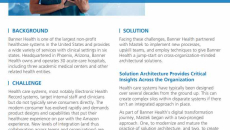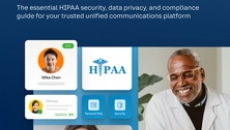White Papers
Banner Health, one of the largest U.S. nonprofit healthcare systems, serves patients across six states. As part of its digital transformation process, Banner partnered with Mastek to modernize its IT infrastructure and develop a governance framework.
As healthcare organizations (HCOs) transition from fee-for-service to value-based care models, healthcare leaders must determine how to enable data sharing across their organizations to improve care delivery and patient outcomes. Integrating their electronic health record (EHR) platforms with cloud-based systems such as Salesforce Health Cloud can help HCOs unify data from multiple sources to create a holistic, real-time view of a patient’s care journey.
Legacy analog telephone lines, also known as Plain Old Telephone Service (POTS), are becoming more expensive to maintain, leading organizations to seek alternatives. These POTS lines are used in life safety systems such as fire alarms, elevator phones and building entry systems, which need to follow compliance guidelines. However, carriers are phasing out these lines, charging more and providing less support. It’s time to modernize and reclaim profits.
According to the joint study by Waystar and The Health Management Academy (THMA), organizations rely on RCM partnerships to meet their revenue cycle needs, improve cash flow, manage costs, and allow them to focus on delivering care. Nearly 75% of organizations juggle more than four RCM partners, which begs the question: Could consolidation reduce costs, increase efficiency, or improve revenue performance?
Transitioning to value-based care models can pose a challenge for integrated delivery networks (IDNs) that work with providers across a wide spectrum of services. The need to align multiple clinical practices’ disparate IT systems makes communication and collaboration difficult.
With a majority of healthcare organizations lacking proper technology to address HIPAA compliance, it’s imperative that quick action is taken to avoid serious security and data privacy breaches. Our comprehensive guide provides you with all you need to know to address this time-sensitive issue.





